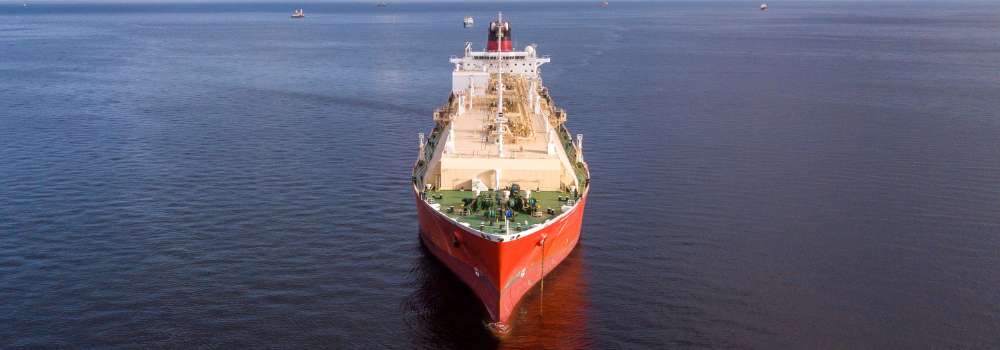Changing Course
Share this blog
Latest Maritime Vacancies
Global HR Director – Europe
Claims & Insurance Manager (Part-time) – London
Legal Counsel (Marine Operations) – London
Insurance Executive – Singapore
Operational and Commercial Pricing Analyst- London
Newbuilding deliveries in 2025: a mixed picture

It is one of the most important questions for the shipping markets. What is the outlook for newbuilding deliveries in 2025? As the end of the current year approaches, the contours of the global merchant ship fleet additions profile during the new year ahead – for bulk carriers, tankers, container ships, gas carriers and other ship types – are becoming clearer.
This year newbuilding orders placed at shipyards in China, South Korea, Japan and elsewhere have increased robustly. The estimated deadweight tonnes volume ordered in the first nine months of 2024 reached last year’s annual total. Tanker and container ship ordering has been stronger, while gas carrier ordering remained brisk. But most contracts recorded recently are scheduled for delivery in 2026 or later. The scheduled deliveries in 2025 have been less affected, and the total may not be much higher than the volume delivered in the current year.
Buoyant recent ordering
Shipowners’ decisions on extending or renewing their fleets have shown a mixed pattern among vessel types this year. Although the broad picture was a distinct strengthening of motivation to order new ships, the trend has been uneven and in part negative. The pattern evolving reflected differing views on longer-term prospects and circumstances in each market segment.
In the biggest merchant fleet category, bulk carriers, newbuilding orders have receded after last year’s revival. According to data compiled by Clarksons Research, bulk carrier ordering in the first nine months of 2024 totalled 33.5 million deadweight tonnes. Currently it seems unlikely that the annual figure will reach last year’s 52m dwt volume.
By contrast, tanker newbuilding orders in the first three quarters of this year continued to increase. A total of 43.5m dwt is provisionally estimated, after an annual 38.1m dwt total in 2023 which in turn was well over three times the very depressed level recorded in the previous year. Gas carrier contracting is also up at 12.9m dwt in the first three quarters of 2024. This volume exceeds last year’s annual 11.5m dwt which was much lower than the record high attained in the previous twelve months.
Container ship ordering has revived again sharply, rising to 32.0m dwt in this year’s first three quarters (using a common tonnage measure for comparison purposes – the usual measurement is the teu, or twenty-foot equivalent unit). During 2023 as a whole the volume had declined to 17.9m dwt.
Ordering enthusiasm this year has been concentrated more narrowly in specific size groups. Among tankers, VLCCs attracted the most interest, resulting in contracting of almost three times last year’s reviving volume. Higher orders for liquefied natural gas (LNG) carriers emerged, while greatly increased orders for larger container ships of 8,000 teu and over were a feature.
2025 deliveries schedule
At the beginning of October this year, the world orderbook for merchant ships of all types totalled 342.4m dwt, a rise of about a fifth compared with the total at the beginning of 2024, and equivalent to about 15% of the existing world fleet, based on Clarksons Research calculations. About a third of that figure, 94.5m dwt, is scheduled for delivery in 2025. But that figure may eventually rise as a result of any delayed deliveries from the current year, and possibly some orders already placed being revealed later.
The outlook implies that global merchant ship newbuilding deliveries next year could rise slightly compared with an estimated 90m dwt in 2024 and 88m dwt last year. Within this fairly stable trend, some large variations among vessel types are likely to be seen. In 2025 notable changes expected, compared with results for the current year, are an upsurge in tanker deliveries, higher gas carrier deliveries, a downturn in the container ships volume and unchanged bulk carrier deliveries. These changes are shaped by earlier patterns of ordering during the past couple of years.
Another feature of the global orderbook for newbuildings is significant. There are differences, among the main ship type segments, in the percentage of the existing fleet deadweight tonnage that current orders (for all delivery dates) comprise. The highest is in gas carriers, where newbuildings on order are now equivalent to a huge 47% of the existing fleet. The next highest is container ships, where equivalent to 23% is on order. For tankers the figure is 13% and for bulk carriers 10%. Large parts, especially ships ordered during the past twelve or so months, will be delivered further ahead in 2026 and 2027.
Ship investors’ changing perceptions, or sometimes confirmed perceptions, about the outlook for the freight markets and profitability expectations, have been reflected in how investment in new tonnage has unfolded. Aspects complicating decisions were uncertainties about prospects for sea trade growth amid the energy transition, and about the alternative fuels imperative. Rising shipbuilding prices and stretched orderbooks at shipbuilding yards also had an impact.
Article written by Richard Scott FICS
Committee member, London & South East Branch, Institute of Chartered Shipbrokers